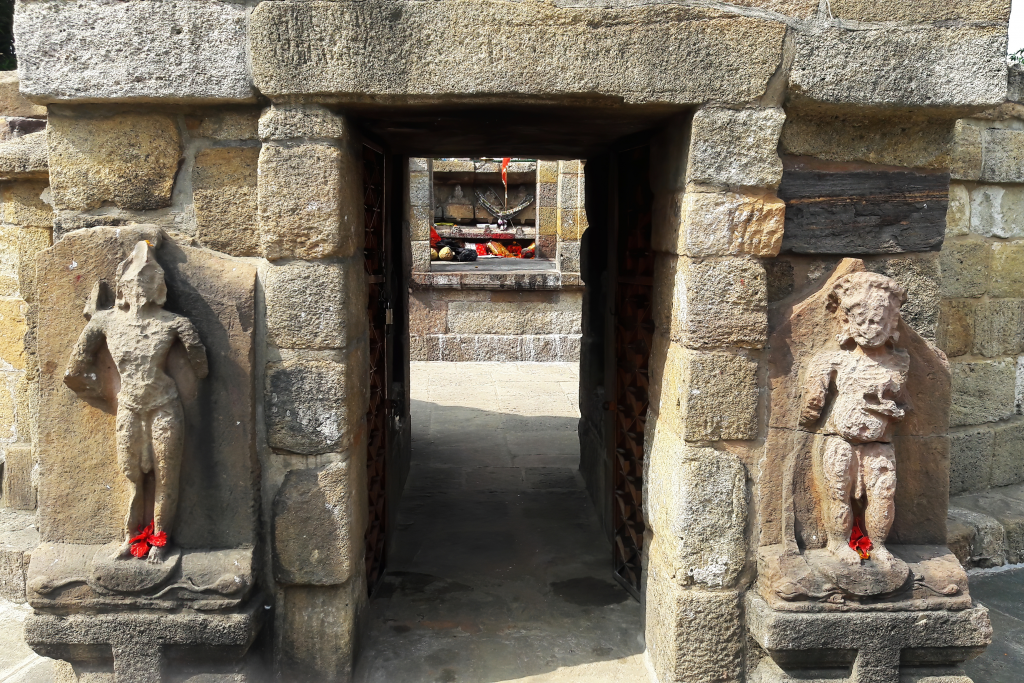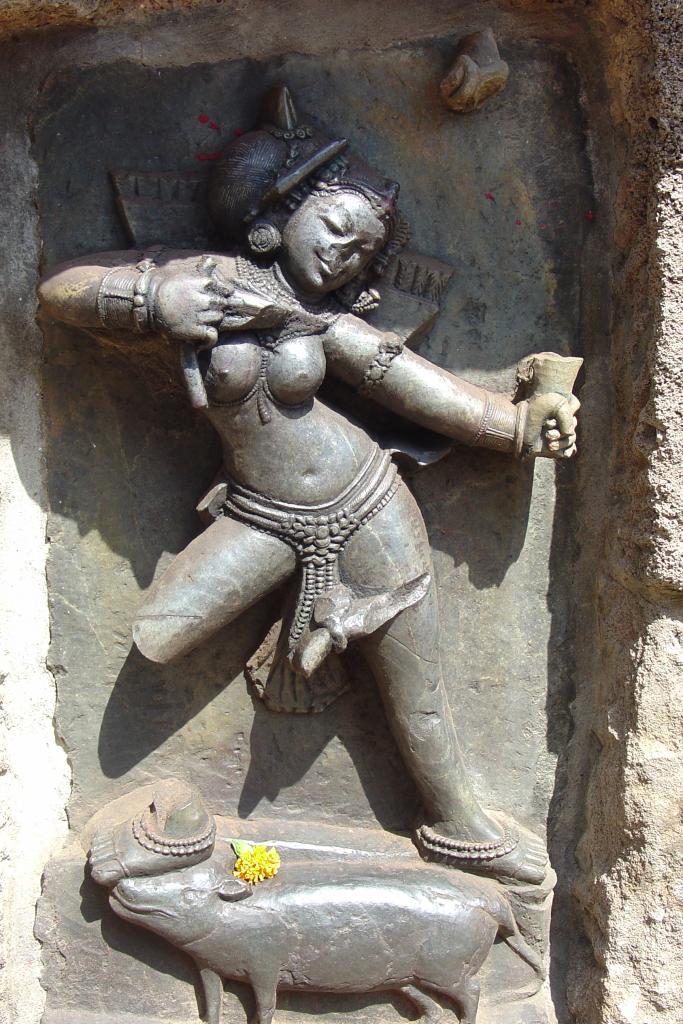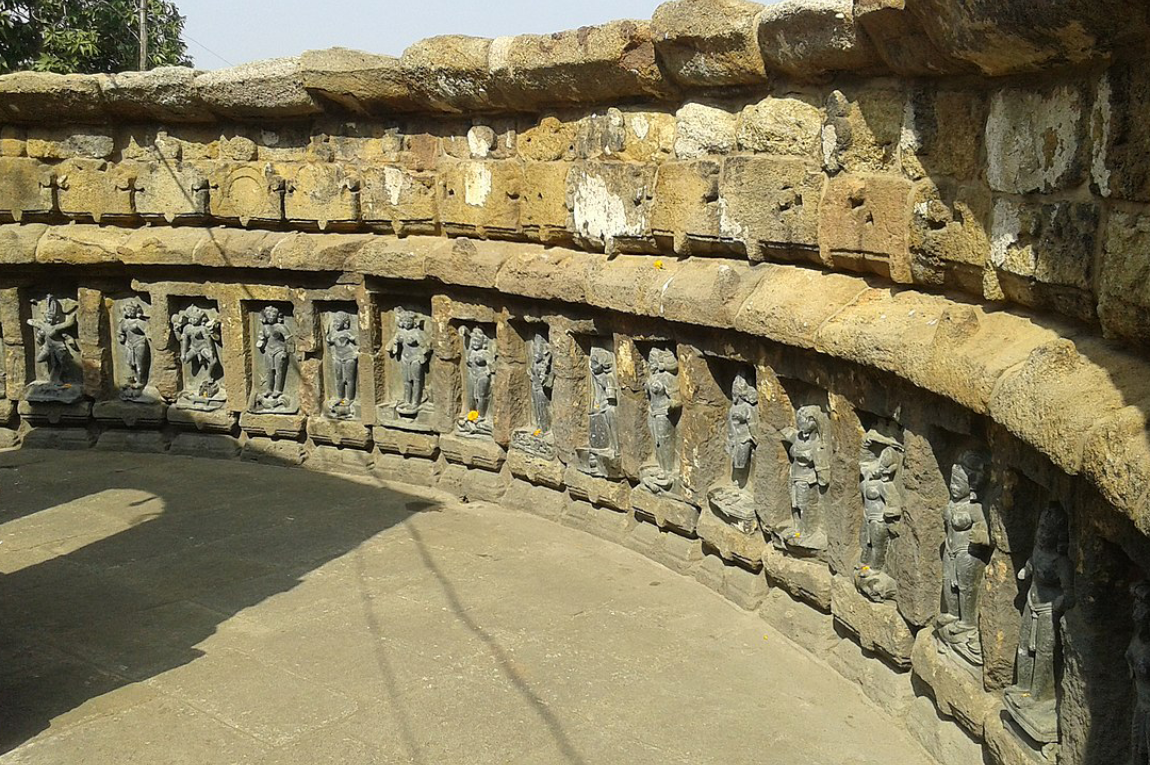I was born and brought up in the temple city of Bhubaneswar. Throughout my childhood, a clutch of magnificent temples hovered beyond my realm of interest. Years later, however, I felt the temples calling out to me. On one of my recent visits back home, I caved in and decided to go temple-hopping.
In the city of temples, one is spoilt for choice. After cogitating at length, I zeroed in on the Chausath Yogini Temple in Hirapur, a tiny hamlet on the outskirts of Bhubaneswar, about 20km from the city. The relative obscurity of the temple, its diminutiveness and that it is modelled on the trope of ‘yoginis’ — demi-goddess avatars of goddess Durga — intrigued me. One sunny morning, my uncle, who is always eager for an adventure, drove me to Hirapur.
Nestled among lush paddy fields, the temple is referred to as Mahamaya Mandir by the locals, after Durga, the central deity. It is believed that Queen Hirapur of the Bhaumakara dynasty built it during the 9th century CE when the Yogini cult was at its peak. The cult celebrates the triumph of the feminine cosmic power (Shakti) — represented by Durga and Mahakali — over evil. Chausath (‘64’ in Odia) refers to the 64 yoginis that once adorned the temple wall.
If legend is to be believed, the demon king Raktabija was blessed with a boon that caused thousands of progeny to spring forth when his blood touched the ground. Durga unleashed 64 yoginis who drank every drop of his blood before it fell to the ground, thus vanquishing Raktabija. The priest who told me of this myth spoke in hushed tones of ancient tantric rituals and sacrifices once performed here. The yogini sculptures — their expressions fierce, holding weapons and severed heads — stand testament to this. Even today, the goddess is offered burnt fish on specific days of the week. The temple remained hidden in plain sight until Kedarnath Mohapatra of the Odisha State Museum came across it in 1953. Since then, it is listed under and protected by the Archaeological Survey of India (ASI).

Architecturally, the temple bears no resemblance to the Kalinga style of architecture, to which most of Bhubaneswar’s temples built between the 7th and 13th centuries CE belong, including the Mukteshwar, Rajarani and Lingaraj temples. In the Kalinga style, the main temple is centrally located, surrounded by several smaller shrines. In comparison, the Chausath Yogini Temple is circular, small and roofless. The hypaethral (roofless) architecture is probably because the Yogini cult worshipped nature and its elements, namely fire, water, earth, air and ether.
Another factor differentiating the temple’s architecture is the absence of the four halls — an otherwise key feature of the Kalinga style — Vimana (the deity hall), Mukhasala (the audience hall), Natamandira (the festival hall) and Bhoga Mondapa (the hall of offerings).
Scholars have compared the temple’s structural plan to the yoni pedestal of the Shiva lingam, and I can indeed see how the circular temple, combined with a narrow, protruding entrance passage, supports the thought. Upon walking through the passageway, we faced the central square-shaped pavilion with eight carved niches and the statue of goddess Kali standing atop a human head. Surrounding the pavilion is a two-metre-tall circular boundary wall with 64 niches carved into the sandstone blocks. Originally, each niche had a yogini statue, carved out of black slate stone. Today, unfortunately, only 56 of the 64 have survived the ravages of time and foreign invasions.
The idols are erect, standing 40cm tall, with their respective animal-form vehicles (vahanas). Each uniquely poised yogini is graceful with a slender waist, flared hips, round breasts and delicate facial features — a sensually poetic depiction of the female form common to temple sculptures across Odisha. I was especially mesmerised by the anklets, bracelets, necklaces, armlets, hair adornments and sequinned girdles encircling the waists. The faint impressions of gossamer skirts flowing down from the girdles left me spellbound.

My uncle and I slowly walked around, wondering at the ingenuity and skill of the artisans who created the sculptures. It seemed they had brought blocks of chlorite rocks to life — a remarkable feat considering they used the most primitive tools and the statues were small.
The Chausath Yogini Temple lacks the grandeur of most temples in Odisha, such as the Jagannath Temple in Puri or the Lingaraj Temple in Bhubaneswar. Nonetheless, it has a mystic charm that held me captive. Moreover, its historic significance is undisputable. It is one of the few yogini temples that stand witness to the existence of the Yogini cult that flourished in central India during the early medieval period, between the 8th and 12th centuries CE. The other prominent ones are at Ranipur in Odisha, and three in Madhya Pradesh, namely at Mitaoli, Bhedaghat and Khajuraho. Given a chance, I’d gladly revisit the quaint Chausath Yogini Temple and spend time exploring the surrounding countryside too.
Find your way to the Chausath Yogini Temple in Hirapur, Odisha via Google Maps here.
Our selection of stays across India, best visited for their design and style. Check in
Seema Misra loves capturing life through words and watercolour sketches. She is based in Malé, Maldives, where she works as a content manager for a hospitality brand. She is on Instagram at @seemamisra.







